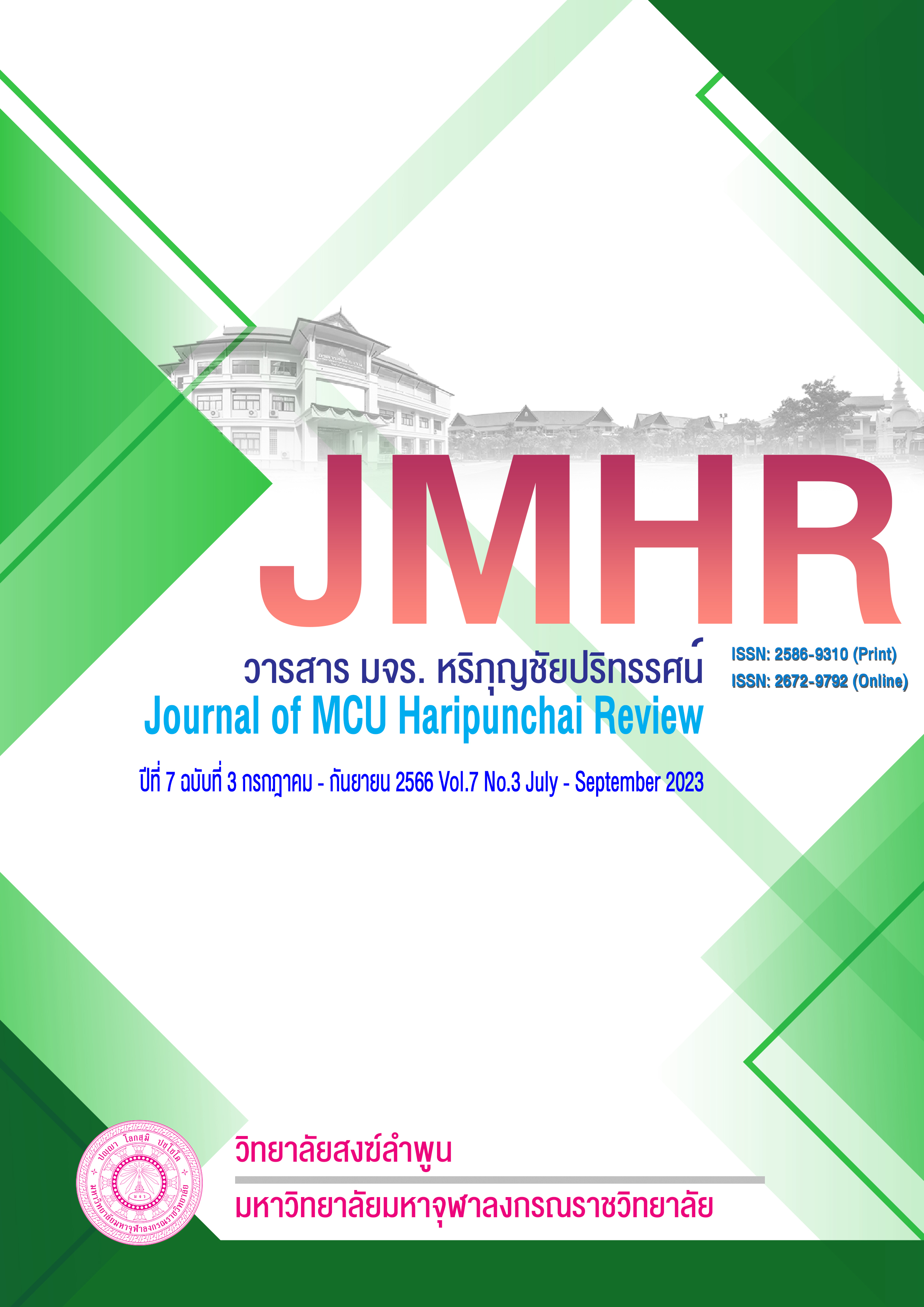The Castle of Creatures in Abāyabhūmi
Main Article Content
Abstract
Buddhism has beliefs about castles. which arises from all good deeds that have been done while still being a human being After reincarnating from the human realm, he was born in the Sakkha realm as a deity who lived in a beautiful castle. The castle that appears to the angels is beautiful, decorated with gold, sapphire glass, precious stones. And there are also many retinue factors in abundance But at the same time, the castle also appeared to the animals that were born in the Abyss. which has a condition similar to the castle of the angels, which is beautiful decorated with gold Lots of sapphires But that existence is not a happy paradise like the angels. because it is still a paradise that is still laced with constant sorrow Therefore, it is known as the paradise of suffering, that is, there is a beautiful castle to live in. It is true, but it must suffer, that is, it has some ugly shape. Do you have to be alone? There are no clothes to wear, etc. The castle that appears to the creatures that occur in this misfortune has appeared to some kind of ghosts and monsters. The reason for having to emerge in the Abyss and having a castle as a residence Comes from doing unwholesome deeds in the days when we were still humans. But at the same time he was the one who gave alms to the monks. after death due to unwholesome karma resulting in misfortune That is, they are ghosts and monsters. But the virtue of giving alms made him have a beautiful castle to live in. but must receive suffering according to their landscape cannot be freed from suffering. should abstain from all unwholesome deeds and perform meritorious deeds which will bring happiness in both this life and the next life
Article Details

This work is licensed under a Creative Commons Attribution-NonCommercial-NoDerivatives 4.0 International License.
References
พระธรรมปิฎก (ป.อ. ปยุตฺโต). (2543). พจนานุกรมพุทธศาสน์ ฉบับประมวลศัพท์. พิมพ์ครั้งที่ 9. กรุงเทพมหานคร : โรงพิมพ์มหาจุฬาลงกรณราชวิทยาลัย.
พระพีร์ญาภพพ์ ธารพนาลี. (2563). ศึกษาวิเคราะห์วิมานในวิมานวัตถุ. วารสารมนุษยศาสตร์ มหาวิทยาลัยนเรศวร. 17 (1), 65-72.
พระมหาชาญชัย ชุตินฺธโร. (2558). วิเคราะห์หลักพุทธธรรมในวิมานวัตถุที่มีอิทิพลต่อความเชื่อของพุทธศาสนิกชน ตำบลสวนเขื่อน อำเภอเมือง จังหวัดแพร่. วิทยานิพนธ์พุทธศาสตรมหาบัณฑิต (สาขาวิชาพระพุทธศาสนา). บัณฑิตวิทยาลัย มหาวิทยาลัยมหาจุฬาลงกรณราชวิทยาลัย.
พระมหาธรรมราชาที่ 1พญาลิไทย. (2536). ไตรภูมิกถา. พิมพ์ครั้งที่ 3. กรุงเทพมหานคร : กรมศิลปากร.
พระกฤษณุ ปญฺญาวชิโร กาแก้วมิตรมาร ภัรฑิลา น้อยเจริญ และคิด วรุณดี, (2560). ภูมิวิลาสินี : เครื่องเตือนใจให้สังคมอยุ่ในพุทธโอวาท. วารสารปัญญาปณิธาน. 2 (1), 19-37
มหาจุฬาลงกรณราชวิทยาลัย. (2535). พระไตรปิฎกภาษาไทย ฉบับมหาจุฬาลงกรณราชวิทยาลัย. กรุงเทพมหานคร: โรงพิมพ์มหาจุฬาลงกรณราชวิทยาลัย.
มหามกุฏราชวิทยาลัย. (2534). พระไตรปิฎกพร้อมอรรถกถา แปล ชุด 91 เล่ม. กรุงเทพมหานคร: โรงพิมพ์มหามกุฏราชวิทยาลัย.
มานพ รักการเรียน และพระภาวนาพิศาลเมธี วิ. (2560). การรอดพ้นอบายภูมิตามหลักพระพุทธศาสนา. วารสาร มจร บาฬีศึกษาพุทธโฆสปริทรรศน์. 3 (1), :29-48
ราชบัณฑิตยสถาน. (2542). พจนานุกรมฉบับราชบัณฑิตยสถาน พ.ศ. 2542. กรุงเทพมหานคร : นานมีบุ๊คส์พับลิเคชั่นส์.
วรรณสิทธิ ไวทยะเสวี. (2547). คู่มือการศึกษา พระอภิธรรมมัตถสังคหะ ปริจเฉทที่ 7 สมุจจยสังคหวิภาค. พิมพ์ครั้งที่ 6. กรุงเทพมหานคร: หจก. ทิพยวิสุทธิ์.
สิรีรัศมิ์ สิงห์สนธิ และพระมหายุทธนา นรเชฏโฐ. (2562). วิเคราะห์กุศลกรรมในคัมภีร์วิมานวัตถุ. วารสารพุทธมัคค์ ศูนย์วิจัยธรรมศึกษา สำนักเรียนวัดอาวะวิกสิตาราม. 6 (2), 101-111


